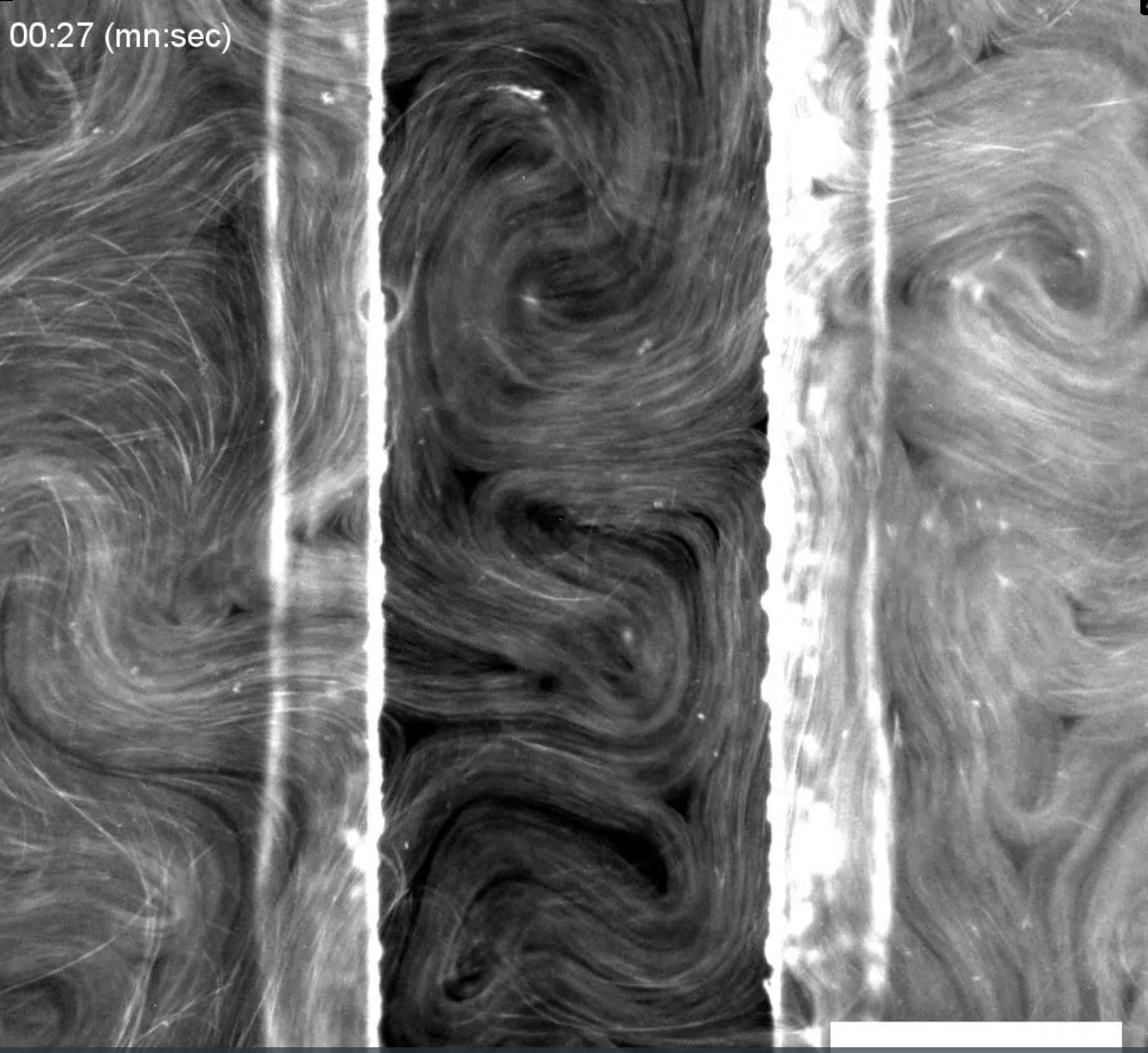Writing in the Proceedings of the National Academy of Sciences, graduate student Dmitrius Khaladj and professor Linda Hirst and collaborators, show that active fluids can be controlled with microfabrication. Active fluids are a relatively new class of materials in which spontaneous flows are generated by an internal energy source. In this new paper, Prof. Hirst and collaborators have developed and tested a new method to manipulate these self-driven flows using microfabricated structures. Methods to manipulate and control the dynamics of spontaneously flowing active materials are vital if these fluids are to lead to technological applications.
This International project combines experimental work at UC Merced, performed by physics graduate student Dimitirus Khaladj with computational simulations performed at Edinburgh and Oxford Universities.
The paper reports the development of an easy-to-implement technique to achieve tunable, local control over active nematic films, the preeminent example of active fluids. We established that micropatterns, fully submersed below active films, have a pronounced impact on dynamics. To showcase the adaptability of the technique, the paper presents four proof-of-concept microstructures: trenches, undulated sinusoids, stairways, and pillars. Each illustrates a particular strength of our approach, including enacting abrupt virtual boundaries to trap topological defects, separating distinct flow states at constant levels of biochemical fuel, gently guiding self-propelled defects, and modifying local active nematic composition.


